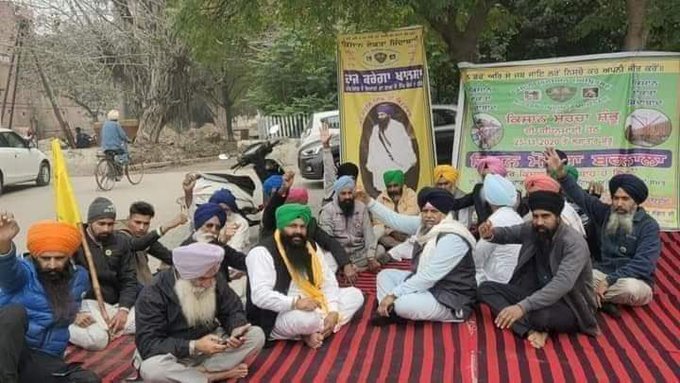The blockade on Delhi-Haryana border by opposition backed Khalistani is costing dearly to the real farmers of Haryana and neighbouring states due to supply disruption. Most of the farmers from Haryana, Punjab, and Himachal Pradesh- especially those involved in horticulture or dairies business- sell their products to Delhi because they get better prices in the city.
However, since the last few days, the blockade at Delhi-Haryana border has disrupted the supply. As per various reports, the supply of handloom, vegetables, metals and footwear has been disrupted, and this costs thousands of crore rupees to farmers and shopkeepers collectively every day.
“The blockade has hit the transportation of vegetables to the national capital, forcing us to sell the produce in the local mandis. There, we get very less prices in comparison to the mandis of Delhi,” said Chander Parkash, chief of a farmers producers’ organisation under which 1,160 farmers are registered.
As per a report by Dainik Bhasker, Handloom industry is suffering a loss of 280 crore rupees per day due to blockade. Since last 6 days, we are neither receiving supply of raw products nor the finished product could be transported anywhere in the country, said Pritam Singh Sachdeva from Panipat Industrial Association.
Apart from handlooms, the supplies of vegetables, food products, and footwear are also suffering due to protest.
The highest procurement of Agricultural products takes place on MSP from the state of Punjab and Haryana. As per various reports, more than 80 per cent of wheat and rice procured by Food Corporation of India is procured from Punjab, Haryana, and Western UP. The Union government spends around 1.7 lakh crore rupees every year on MSP procurement, the majority of which goes to a small number of farmers in these states.
In short, the taxpayers across the country pay for the output subsidy of farmers from Punjab and Haryana. In spite of the fact that land in Western India is far from suitable for the production of paddy, the farmers from these states produce it in large quantities just because the government offers MSP on it.
On the other hand, the Eastern Indian states which have higher water availability and produce a better quality of rice, sell at market prices, not MSP. Similarly, even in the states of Punjab, Haryana, and Himachal Pradesh, the farmers who are in the business of horticulture and dairy products, are not dependent on MSP. But, the wheat and paddy farmers who live on government subsidies, are holding the products of genuine farmers who dependent on markets to ransom.
